Women who experience sagging of the breasts due to pregnancy, breast feeding, age, weight loss or aging breast implants may desire a breast lift to restore upper pole fullness or cleavage or to provide a perkier breast. A breast lift can also incorporate a reduction of the areola at the same time if desired.
If a woman does not possess enough breast tissue to result in a nice shape with a lift alone, it may be necessary to add a breast implant for shaping or to restore adequate upper pole fullness. The addition of an implant isn’t always recommended just for enlarging the breast, but can also be used as a small shaping device when sufficient tissue is lacking to provide an attractive upper pole shape or cleavage with a breast lift. If a breast implant is indicated, the style and size are determined in a bio-dimensional approach individualized for each patient and chosen based on patient desires and chest measurements. Both round and shaped implants are appropriate in an augmentation mastopexy.
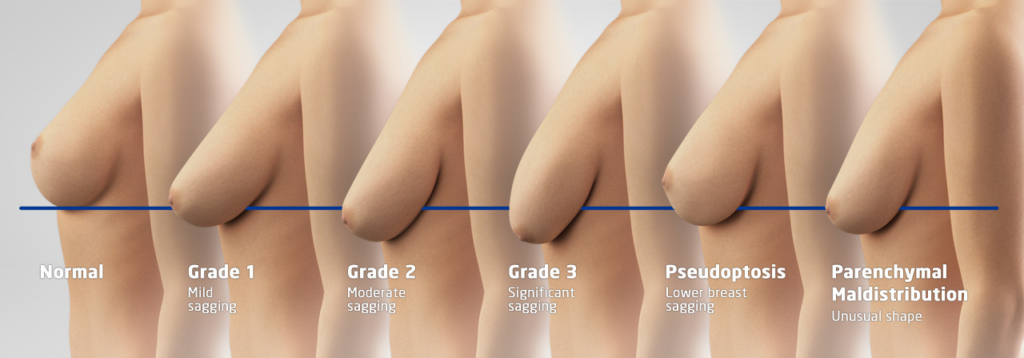
The pattern of breast lift incisions varies. Dr. Samuels strives to use as few incisions as possible, and places them in areas that are easier to conceal with bras, bathing suits and clothing. The recommended lift depends on the amount of loose skin and tissue the patient possesses. Sometimes, adding volume with simultaneous use of a breast implant can reduce the amount of loose tissue remaining and may reduce the number or length of lift incisions used. In most cases, when an implant is recommended along with a breast lift, it’s possible to perform both procedures at the same time.
Even though there is an incision around the areola in a breast lift of all three varieties, the nipple is not removed from the underlying tissues. Therefore, after breast lifting, 95% of women maintain nipple sensation, erectile function and the ability to breastfeed in the future.

The female breast undergoes significant changes throughout a woman’s life, with gravity, hormonal fluctuations, pregnancy, breastfeeding, and natural aging processes all contributing to alterations in shape, position and firmness. Understanding these changes helps women recognize when breast lift surgery becomes a viable solution for restoring their desired aesthetic and improving self-confidence.
Pregnancy represents one of the most dramatic periods of breast transformation, with hormonal surges causing breast tissue to expand significantly in preparation for nursing. The skin stretches to accommodate increased volume, while the supporting ligaments and internal breast structure adapt to these changes. Following pregnancy and breastfeeding, many women experience volume loss accompanied by skin laxity, resulting in breasts that appear deflated or elongated rather than full and lifted.
Weight fluctuations also play a crucial role in breast shape changes, as significant weight loss can leave excess skin that no longer conforms to the reduced breast volume. Similarly, the natural aging process affects skin elasticity and the internal support structures that maintain breast position and shape. These cumulative effects often leave women feeling that their breasts no longer reflect their self-image or complement their overall body proportions.
Contemporary breast lift surgery has evolved to incorporate sophisticated techniques that maximize aesthetic results while minimizing scarring and recovery time. As a female surgeon serving Southern Indiana and drawing patients from as far as Lexington, Dr. Samuels brings advanced training and innovative approaches to mastopexy procedures, understanding the nuanced concerns women have about breast enhancement surgery.
The surgical approach begins with a personal and private evaluation of breast anatomy, skin quality, nipple position and patient goals to develop an individualized treatment plan. Modern techniques focus on repositioning the nipple-areolar complex to a more youthful position while removing excess skin and reshaping the remaining breast tissue to create attractive, natural-looking contours.
The key to successful breast lift surgery is understanding the three-dimensional nature of breast anatomy and how surgical modifications affect immediate appearance and long-term results. Advanced techniques preserve important anatomical structures while achieving optimal lift and projection, ensuring that results look natural and feel comfortable.
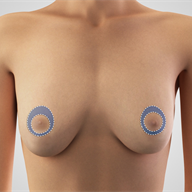
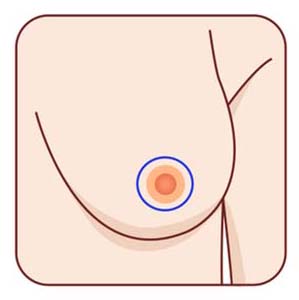
This is often referred to as a nipple lift. An incision is made around the areola, both to reduce its size if excessive as well as to raise its position on the breast. However, there is no significant lift of tissue with this type of lift.
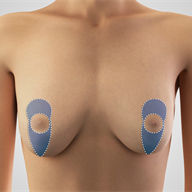
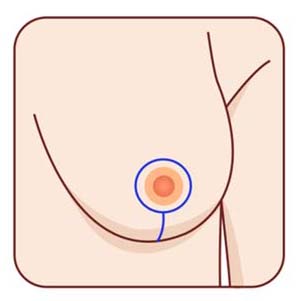
For this type of lift, a vertical incision is added around the areola and toward the breast fold. Since skin is removed around the areola as well as in the central lower pole of the breast, a modest lift of both tissue and nipple may result.
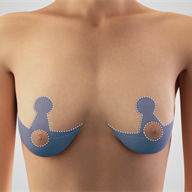
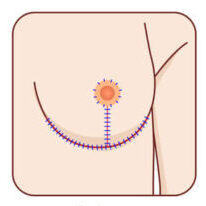
For patients with more loose skin and tissue than can be accommodated with the lesser two varieties of lifting, an incision in the breast fold may be added to the donut and lollipop to remove more lower pole skin. This type of lift gives the greatest lift of the breast, and the additional fold incision is well concealed by the fold itself.
Many women benefit from combining breast lift surgery with augmentation to achieve comprehensive breast enhancement that addresses both shape and volume concerns. This combined approach represents one of the most technically challenging procedures in cosmetic surgery, requiring extensive expertise to balance the competing goals of lifting existing tissue while accommodating new implant volume.
The decision to combine procedures depends on individual anatomy and aesthetic goals. Women with adequate breast tissue but a lack of upper pole fullness may benefit from a lift alone, while those with volume loss following pregnancy or weight changes often achieve better results with combined procedures. The strategic use of breast implants can enhance lift results by providing internal support that helps maintain long-term breast position and shape.
When combining procedures, implant selection becomes crucial to overall success. Factors including chest width, existing breast tissue characteristics, skin quality, and desired outcome all influence the choice between saline and silicone implants and considerations regarding implant size, shape and placement technique. The bio-dimensional approach ensures implant selection complements natural anatomy rather than overwhelming the frame or creating unnatural proportions.
The extent of lifting required determines the incision pattern used, with modern techniques emphasizing minimal scarring while achieving optimal results. The periareolar or “donut” lift only addresses mild sagging through incisions around the areola, making it ideal for women requiring modest nipple repositioning and minimal skin removal. This technique produces the least visible scarring but provides limited lifting capability.
The vertical or “lollipop” lift incorporates an additional vertical incision extending from the areola toward the breast fold, allowing for more significant tissue reshaping and lift. This technique effectively addresses moderate sagging while maintaining relatively conservative scarring that remains well-concealed beneath most clothing and swimwear.
The anchor or “inverted-T” lift includes an additional horizontal incision along the breast fold, providing maximum lifting capability for women with significant sagging or excess skin. While this technique produces the most extensive incision pattern, the scars are strategically placed to follow natural breast contours and remain hidden beneath the breast fold and clothing.
Dr. Samuels’ philosophy emphasizes using the minimal incision pattern necessary to achieve optimal results, often employing techniques that allow for incremental scar reduction while maintaining surgical effectiveness. This approach ensures that each patient receives the most conservative treatment to achieve their aesthetic goals.
The recovery process following breast lift surgery varies depending on the extent of the procedure and whether augmentation is performed simultaneously. Most patients experience initial discomfort similar to muscle soreness, which resolves gradually over the first week following surgery. Using specialized post-operative bras and gentle compression helps support healing tissues while promoting optimal shape development.
Patients typically return to desk work within several days and resume most normal activities within two weeks. However, lifting restrictions and exercise limitations continue for approximately six weeks to ensure proper healing. The gradual return to full activity allows the surgical sites to heal properly while minimizing the risk of complications or adverse effects on final results.
Long-term maintenance of breast lift results depends on several factors, including skin quality, lifestyle choices, weight stability and natural aging processes. While breast lift surgery cannot prevent the natural aging process, the results typically remain stable for many years when patients maintain consistent weight and follow appropriate post-operative care guidelines.
Future pregnancies will affect breast lift results, though many women who become pregnant after mastopexy maintain satisfactory breast appearance. The decision regarding the timing of breast lift surgery should consider family planning goals, with many women choosing to delay surgery until after completing their families.
Choosing the Right Surgeon for Optimal Results
The technical complexity of breast lift surgery, particularly when combined with augmentation, requires extensive surgical expertise and artistic judgment. The procedure demands a thorough understanding of breast anatomy, skin healing characteristics, and the interplay between lift techniques and long-term aesthetic outcomes.
Selecting a surgeon with specific expertise in mastopexy procedures ensures access to the most current techniques while minimizing risks and optimizing results. Combining surgical skill, aesthetic judgment and patient-centered care creates the foundation for successful breast lift surgery that enhances appearance and self-confidence.
Women with small or sagging breasts or women who are happy with the size of the breasts but want volume restored in the upper pole or cleavage area are good candidates for breast lifts. A mastopexy may be performed regardless of breast size, but results may not last as long in women with heavy breast tissue. For women who may be planning additional children after surgery, remember that pregnancy ages the breasts; further breast lifting may be necessary after additional children or breast feeding. Weight loss may lead to a loss of skin elasticity and the loss of some of the results of breast lift surgery, so it’s wise to proceed with breast lifting when a patient is near their goal weight.
Dr. Samuels will discuss your goals and recommend the best type of lift for you based on the amount of loose tissue present with or without implants. Dr. Samuels’ personal philosophy includes use of the fewest, shortest incisions possible and adding other incisions incrementally to deliver the best, most long-lasting result.
Depending on patient age and family history, Dr. Samuels may require patients to have a mammogram prior to surgery. It is recommended that breastfeeding be discontinued at least three months prior to breast lift surgery. If you use nicotine, be prepared to discontinue it at least six weeks prior to surgery and to not resume for at least six weeks following surgery; this will optimize healing and avoid unsightly scars or complications around an implant. Dr. Samuels and her staff give you specific instructions regarding surgical preparation and any medications to avoid in the two-week period surrounding your surgery.
Surgery is performed under a light general anesthetic in Dr. Samuels’ fully Quad A accredited in-suite operating room.
Recovery time varies from two to ten days of using light dressings under a bra. If a breast implant is utilized, the Quick Recovery Technique is used. See our blog posts for more information on this technique. Patients may resume normal daily activities immediately and strenuous activities or workouts six weeks after incisions are healed.
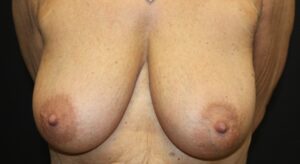
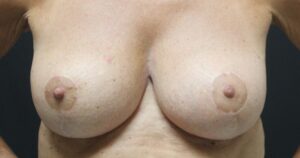





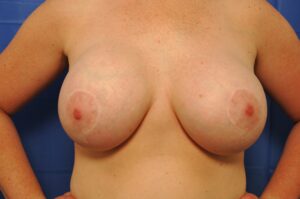


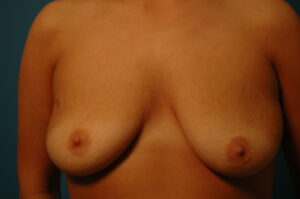

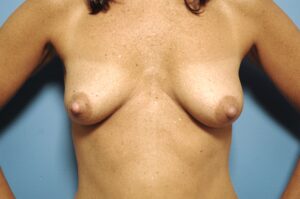
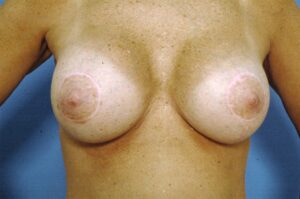
For more information about breast lift or to see if you’re a good candidate for this procedure, schedule a consultation with Dr. Samuels at 502-897-9411.
Our practice serves Louisville, KY and the surrounding areas.